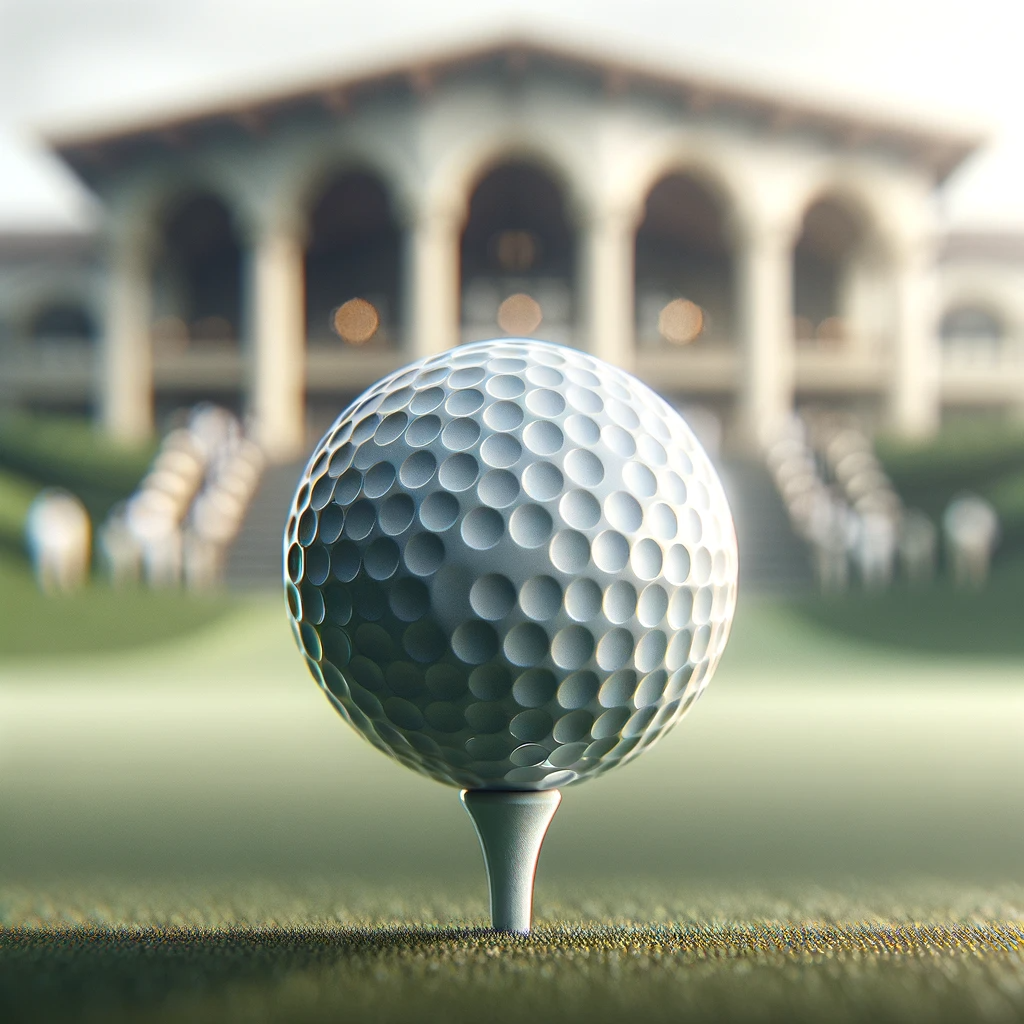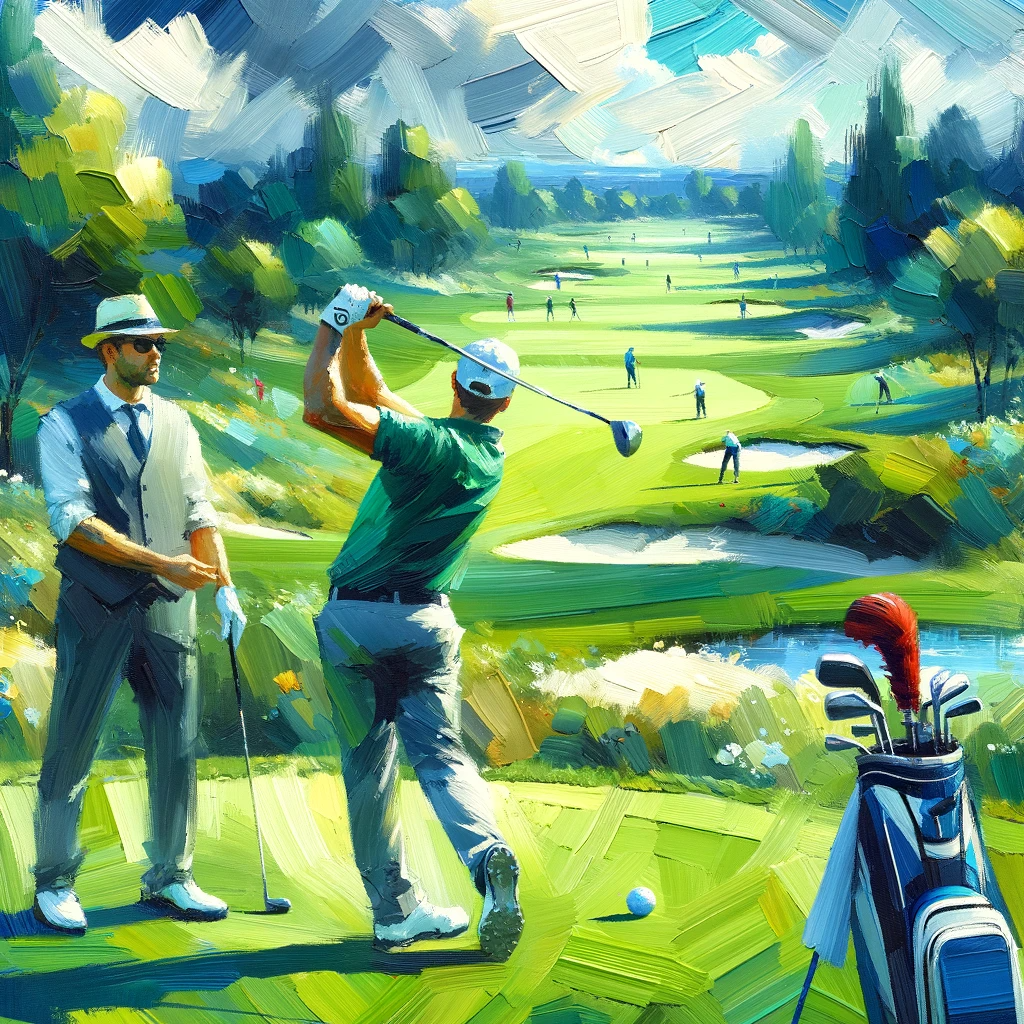- Home
- Equipment
- Golf Balls
- Which Golf Ball Is the Best
Unlocking the Secret to the Perfect Golf Ball: A Comprehensive Guide
As a fellow golfer on a quest to perfect our game, the question which golf ball is the best resonates deeply with us. In this guide, we delve into the heart of golfing – selecting the right golf ball. It's not just about the brand or the price; it's about finding that perfect sphere that aligns with your swing, style, and aspirations. From dissecting the construction of various golf balls to unraveling how they can lower your score, we cover it all. Plus, don't miss the key takeaways and FAQs at the end, especially if you're short on time. Get ready to transform your game and find your ideal golf ball today!
As a fellow weekend golfer, just like you, I know the puzzle we all face – choosing the right golf ball. It's not just about picking the shiniest one in the pro shop or the brand you saw in a flashy ad. The challenge is deeper. Every time we hit the course, we're haunted by questions: "Am I using the right ball for my play style? Could a different ball improve my game?" This uncertainty can be a real buzzkill, especially when we're trying to shave those extra strokes off our score.
Remember that time you were on the tee, ready to impress your buddies with a monster drive, but the ball just didn't behave as you expected? It either fell short, veered off wildly, or just didn't give you the satisfaction of a well-struck shot. Frustrating, right? It's like that mythical quest for the Holy Grail – only our grail is a golf ball that complements our swing, feels right, and, of course, doesn't break the bank. The sea of choices – soft vs. hard, spin vs. distance, urethane vs. surlyn – it's enough to make your head spin faster than a well-hit wedge shot!
But here's the good news. I've been there, done that, and got the tee-shirt (and a few golf caps, to be honest). Through trial and error, insider tips, and a relentless pursuit of golfing nirvana, I've gathered some game-changing insights. In this guide, we'll dive deep into the world of golf balls. We'll answer the most burning questions, dispel myths, and equip you with knowledge so you can stride onto that first tee with confidence, knowing you've got the best ball for your game in your bag. So, grab your favorite club, and let's embark on this journey to unlock the secret to choosing the perfect golf ball. After all, your next great golf story starts with the right ball.
 Comparing different golf balls to enhance your performance.
Comparing different golf balls to enhance your performance.What Factors Determine the Best Golf Ball for Your Game?
Golf balls are more than just white dimpled spheres; they're the unsung heroes of our game, pivotal in turning a good round into a great one. Here's a deep dive into what makes a golf ball the "best" for your game.
1. Understanding Golf Ball Construction
- Two-Piece Balls: Ideal for beginners and high-handicappers. They offer more distance and durability, thanks to their large, solid rubber core and tough outer cover.
- Multi-Layer Balls: These are for the more experienced players. With additional layers (like three or four-piece designs), they provide better control and feel, perfect for nuanced shots.
2. Compression Matters
- Low Compression Balls: Softer and more forgiving, they're suited for players with slower swing speeds. They help in getting more distance.
- High Compression Balls: They require faster swing speeds and offer more control. If you're regularly hitting long drives, these might be your go-to.
3. Spin: The Invisible Game Changer
- Low Spin Balls: Reduce sidespin, leading to straighter flights. Great for those struggling with hooks and slices.
- High Spin Balls: Increase backspin, helpful for advanced players to control their landing on the greens.
4. Feel: A Personal Preference
- Soft Feel: Provides a better sensation at impact, often preferred for short games.
- Firm Feel: Offers more feedback and is usually favored by players looking for distance.
5. Price: Balancing Quality and Budget
- Not all expensive balls are right for you, nor are all cheap balls bad. Strike a balance between quality and what you're willing to spend.
I remember the first time I switched from a generic two-piece ball to a premium multi-layer one. The difference was night and day! My shots had more precision, and the feel off the clubface was like butter – smooth and satisfying. Sure, it was a bit more expensive, but the improvement in my game was worth every penny.
6. Brand and Model: Beyond the Hype
- Each brand has its unique strengths. Experiment with different brands and models to find the one that aligns with your game.
7. Weather and Course Conditions
- Consider the course layout and weather. For windy conditions, a ball with less spin might be advantageous.
Choosing the right golf ball is a mix of science and personal preference. It's about understanding your playing style, your strengths, and where you need a little help. Don't shy away from experimenting – sometimes, the best way to know is to try them out on the course. After all, the best golf ball for you is the one that feels right in your game and brings out your best on the course.
 Explore the world of golf balls and find your perfect match.
Explore the world of golf balls and find your perfect match.How Do Different Golf Ball Types Impact Your Performance?
Every golfer's journey is unique, and so is their choice of golf ball. Understanding how different types of golf balls can impact your performance is crucial in making an informed decision. Let's break it down.
1. Two-Piece Golf Balls: The Distance Kings
- Characteristics: Durable, less spin, and generally cheaper.
- Performance Impact: Great for beginners or those with slower swing speeds. They maximize distance, but you might sacrifice some control and feel around the greens.
2. Three-Piece Golf Balls: The All-Rounders
- Characteristics: A balance of distance and feel, thanks to an additional layer that provides more spin control.
- Performance Impact: Suited for mid-level players who want a blend of distance and feel. They can help you start shaping your shots more effectively.
3. Four-Piece and Beyond: The Precision Tools
- Characteristics: Each layer is designed for specific performance aspects – speed, spin, control, and feel.
- Performance Impact: Advanced players will appreciate the nuanced control and ability to execute specific types of shots. These balls can significantly improve your short game.
4. Low Spin Golf Balls: Straight Flight Path
- Characteristics: Designed to reduce spin off the tee.
- Performance Impact: Helps in minimizing slices and hooks for straighter shots. Ideal for players struggling with accuracy.
5. High Spin Golf Balls: For the Short Game Savvy
- Characteristics: Increases spin rates.
- Performance Impact: Gives better control on the green. If your short game is your strength, these can enhance your performance.
I once played a round with a high-spin ball after years of using low-spin designs. The difference was stark. My approach shots had more bite, and I could attack pins with more confidence. It was a revelation on how ball type can complement your playing style.
6. Soft Feel Golf Balls: Comfort and Control
- Characteristics: Softer feel, often with lower compression.
- Performance Impact: Enhances control, especially in the short game. They're easier to compress, beneficial for players with slower swing speeds.
7. Dimple Pattern and Aerodynamics
- Characteristics: Dimple patterns affect flight characteristics.
- Performance Impact: Some patterns are designed for higher flight, while others aim for stability in windy conditions.
8. The Importance of Consistency
- Stick to one type of ball to maintain consistency in your game. Constantly changing balls can lead to unpredictable results.
Choosing the right type of golf ball is a significant step in aligning your equipment with your playing style. Whether you're looking for distance, control, spin, or feel, there's a ball out there that fits your needs. Remember, the right ball can be a game-changer, quite literally!

Can the Right Golf Ball Really Lower Your Score?
It's a question that echoes in the minds of golfers everywhere: Can a simple change of golf ball make a tangible difference in your game? The answer is a resounding yes, and here's how.
1. Match Your Ball to Your Swing Speed
- Impact: Using a ball that complements your swing speed can significantly improve distance and control.
- Example: Low compression balls for slower swings can add distance, while high compression balls offer better control for faster swingers.
2. Spin: Your Secret Weapon
- Impact: The right amount of spin can transform your approach shots and putts.
- Example: High spin balls can stop quickly on greens, helping lower scores on par threes or in chip shots.
3. Feel: More Than Just Comfort
- Impact: A ball with the right feel can improve your confidence, especially in the short game.
- Example: A soft-feel ball can enhance your touch around the greens, leading to fewer putts.
4. Consistency is Key
- Impact: Playing with the same type of ball helps in developing a consistent game.
- Example: Familiarity with how your ball reacts under different conditions can lead to better decision-making and shot execution.
I'll never forget the round when I switched to a ball better suited to my playing style. Suddenly, my drives were longer, my approach shots more accurate, and my putts felt more controlled. It wasn't just a good day; it was the right ball making a real difference.
5. Golf Ball Construction: Tailored to Your Needs
- Impact: Different constructions offer varied benefits, like distance, spin, and feel.
- Example: Multi-layer balls can provide a combination of distance and spin control, crucial for scoring well.
6. Weather and Course Conditions
- Impact: Adapting your ball choice to the conditions can give you an edge.
- Example: In windy conditions, a lower spin ball might perform better, helping to keep your shots on target.
7. The Psychological Edge
- Impact: Confidence in your equipment translates to better performance.
- Example: Knowing you have the right ball for your game can boost your confidence, leading to better swings and decision-making.
While no golf ball can magically transform a high handicapper into a pro, the right ball can complement your skills and play style, leading to noticeable improvements in your game. It's about finding that perfect match that not only suits your physical game but also gives you that mental edge. The bottom line? Yes, the right golf ball can indeed help lower your score.
 Finding the perfect golf ball for your unique playing style.
Finding the perfect golf ball for your unique playing style.Key Takeaway: Finding Your Perfect Golf Ball
Discovering the ideal golf ball is a journey that can significantly impact your game. Here's a summary to help you take action:
Quick Checklist
- Know Your Swing Speed: Choose a ball that complements your swing speed for optimal performance.
- Understand Spin Needs: Select a ball with the right spin characteristics for your playing style.
- Feel Matters: Don't underestimate the importance of how a ball feels to you.
- Consistency is Crucial: Stick with one type of ball to develop a consistent game.
- Match Ball to Conditions: Adapt your choice to the course and weather conditions.
- Trust Your Choice: Confidence in your golf ball choice can positively influence your game.
Action Points
1. Experiment: Try different types of golf balls in various conditions.
2. Consult Experts: Don't hesitate to ask for advice at your local pro shop.
3. Join the Golfeaser Community: Share your experiences and learn from fellow golfers.
4. Subscribe to Our Newsletter: Stay updated with the latest tips, stories, and golfing secrets.
5. Embrace the Golfeaser Manifesto: Continue to improve, enjoy the game, and build connections.
Engage with the Golfeaser Community
- Share your golf ball discoveries and experiences.
- Tell us how a specific ball changed your game.
- Sign up for the newsletter to receive exclusive tips and stories.
- Living by the Golfeaser Manifesto
Remember, the journey to finding the best golf ball is part of the larger adventure of golfing. By experimenting, sharing, and engaging with the community, you're not just playing a game – you're enriching your life and those around you, one round at a time.
So, what's your golf ball story? Have you found the perfect one that aligns with the Golfeaser philosophy? Let's keep the conversation going and continue to grow together in this wonderful game of golf.
Are you ready to find your perfect golf ball and transform your game?
Comprehensive FAQ: Selecting the Best Golf Ball
What are the key characteristics of a two-piece golf ball?
What are the key characteristics of a two-piece golf ball?
Two-piece golf balls, designed for durability and distance, feature a large solid rubber core and a tough outer layer. They're ideal for beginners or players with a high handicap, providing a simpler, more forgiving option that enhances distance.
How do multi-layer golf balls affect performance?
How do multi-layer golf balls affect performance?
Multi-layer golf balls, often three or four-piece, are tailored for experienced players. These layers work together to offer a balance of distance, control, and spin, allowing for more precise shots and better feel, especially in short games.
Does the compression of a golf ball impact my game?
Does the compression of a golf ball impact my game?
Yes, the compression of a golf ball significantly impacts its performance. Low compression balls are softer and more suitable for players with slower swing speeds, offering greater distance. High compression balls require faster swing speeds, providing more control and a firmer feel.
What role does spin play in choosing a golf ball?
What role does spin play in choosing a golf ball?
Spin is crucial in determining a golf ball's performance. Low spin balls minimize sidespin, aiding in straighter flight and reducing hooks and slices, while high spin balls increase backspin, beneficial for advanced players seeking greater control and precision on the green.
Can the type of golf ball I use lower my overall score?
Can the type of golf ball I use lower my overall score?
Absolutely. Choosing the right golf ball can lower your score by complementing your playing style. Factors like swing speed, desired spin, and feel preferences all contribute to finding a ball that can enhance your strengths and mitigate weaknesses on the course.
What factors should I consider when choosing a golf ball for different weather conditions?
What factors should I consider when choosing a golf ball for different weather conditions?
For different weather conditions, consider golf balls that perform well in wind (lower spin for stability) or wet conditions (higher spin for better control). The ball's cover material and overall design can also influence how it reacts to various environmental factors.
How important is the brand when selecting a golf ball?
How important is the brand when selecting a golf ball?
While brand preference can be subjective, each brand often has distinct features and technologies. It's worth trying different brands to understand how their specific designs and technologies align with your game preferences and needs.
Is it necessary to use the same type of golf ball consistently?
Is it necessary to use the same type of golf ball consistently?
Using the same type of golf ball consistently can aid in developing a more predictable and stable game. Familiarity with your golf ball's behavior under different situations can lead to improved decision-making and consistency in your shots.
How can the feel of a golf ball influence my playing experience?
How can the feel of a golf ball influence my playing experience?
The feel of a golf ball, whether soft or firm, influences the tactile feedback during play, particularly in the short game. A softer ball can provide a more comfortable feel and better control for finesse shots, while a firmer ball might offer more feedback and suit a power-focused playing style.
What should I consider when balancing quality and cost in golf balls?
What should I consider when balancing quality and cost in golf balls?
Balancing quality and cost involves finding a golf ball that meets your playing needs without exceeding your budget. Higher-priced balls often offer advanced technology and performance benefits, but mid-range or lower-priced balls can also provide good performance, especially for casual or beginner players.














